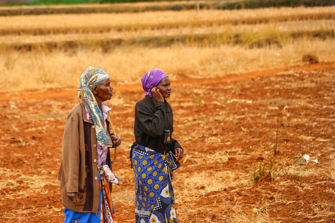#Corporate news
Coface appoints trade credit industry leader Christina Montes De Oca to lead its North America region
Coface has appointed trade credit industry leader Christina Montes De Oca to lead its North America region.

Navigate uncertainty with Coface's global risk assessments covering more than 160 countries and 13 sectors.
#Corporate news
Coface has appointed trade credit industry leader Christina Montes De Oca to lead its North America region.
#Corporate news
Coface North America has appointed Cesar Antonio Michelon Fernandez as its new Commercial Director in Mexico to drive innovation and best-in-class customer service within the organization.
#Corporate news
With more than 20 years of credit insurance industry experience, Jonathan Starck has been named Senior Vice President and Head of Risk Underwriting for Coface's North America Region (NAR).
#Economic publications
What do consumer demand, stock prices and household balance sheets have in common? Quite a lot, actually - and it may all be tied to Artificial Intelligence. Our North America economist Marcos Carias dives right in.
#Economic publications
Wood has been added to the growing list of products subject to specific tariffs in the United States. These new measures could reshape sourcing strategies and pricing dynamics for importers and manufacturers. Find out what this could mean for your business.
#Economic publications
Rice prices have fallen 35% in one year to their lowest level since 2017 (around $360 per ton) following India's lift on export restrictions. After three years of extreme volatility, the market is facing a glut (541 million tons produced in 2024), pushing prices down and upsetting the balance for global producers and importers.
Essential for anticipating business risks, information reports are also practical tools that support effective business management. Prospecting, sales, marketing, financial audit, securing the supply chain or accelerating your customer knowledge processes - these decision-making solutions guide you through every stage of your business.
#Expert advice
What if trade credit insurance was much more than just a safety net? Beyond protecting your company against unpaid invoices, trade credit insurance can help you increase sales, reduce financing costs and improve your profitability in the long term. Discover how trade credit insurance can become a valuable financial management tool and have a positive impact on your balance sheet and income statement.
#Expert advice
While the global economy is reshaping and advanced countries are slowing down, hopes for global economic rebounding rely on emerging ones. If China, the largest emerging economy, is stuck in a structural slowdown, which countries can take over and offer the most opportunities to companies this year?
Essential for anticipating business risks, information reports are also practical tools that support effective business management. Prospecting, sales, marketing, financial audit, securing the supply chain or accelerating your customer knowledge processes - these decision-making solutions guide you through every stage of your business.
#Our solutions
He wears many hats, his projects combine technological innovation and environmental responsibility, and he spends all his days with DORA (the regulation, not the explorer!). Between operational resilience and Green IT, our expert's day-to-day work embodies the new reality of Data & Tech jobs at Coface.
#Our solutions
As with our commercial risk management services, our digital solutions support our clients and partners in their business transformation. Connectivity, generative AI, UX/UI design: our Solutions Development & Architecture expert shares his experience on the added value of data and how new technologies impact the solutions designed by Coface.
Navigate uncertainty with Coface's global risk assessments covering more than 160 countries and 13 sectors.
Dive into the world of global trade with Coface's Trade Talk podcast. Listen to conversations with trade experts as they examine current market dynamics and growth strategies.
Sign up to receive our next analyses, advice and economic studies
Online services for customers and brokers
Business Information
Access the business insights you need to manage credit risks across your entire business-partner portfolio and make strategic decisions with confidence.
Broker Portal
Platform dedicated to brokers for monitoring your business and managing your customer portfolio (in all countries where legally available).
Customer Portal - CofaNet
Coface online platform for managing your trade receivables. Full monitoring of your risks. Direct access to all tools according to your contracts.
Innovative and digital solutions
API Portal
Stop juggling between software applications. Explore Coface API Catalogue and Integrated Solutions for Icon by Coface and trade credit insurance.






